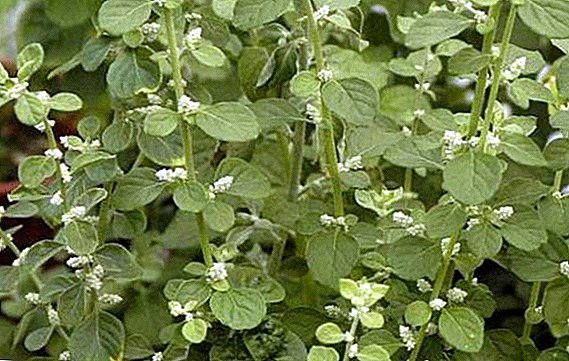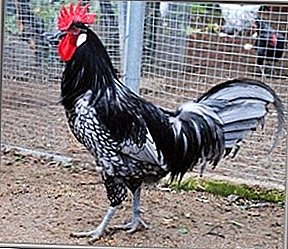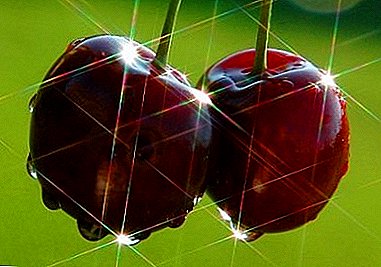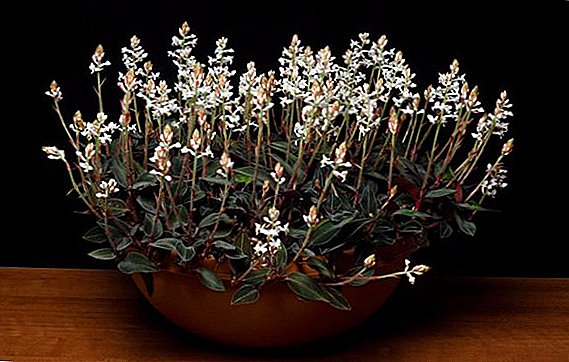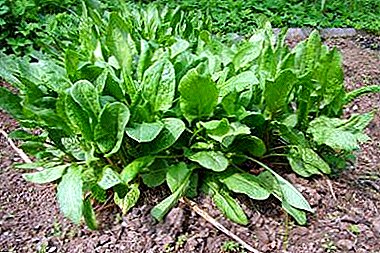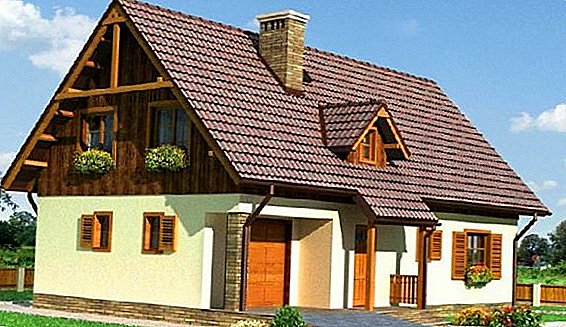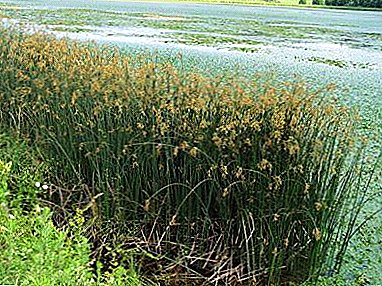
What is this plant? Bulrush is a herbaceous plant (grass) that belongs to the sedge family.
Marsh reed belongs to the genus Cane (Scirpus), numbering about three hundred varieties of annual and perennial plants.
Mostly this plant can be found in the wild, but it also are grown and for the purpose of landscaping artificial reservoirs in the suburban areas.
A photo
Visually to get acquainted with the Reed lake can be in the photo below:




Bulrush:

Other plants are often mistakenly called cane.In particular, cattail and reed, although these are plants from other families.
Homeland plants
 Reeds can be found in almost every corner of the earth, but they are most common in tropical and subtropical latitudes.
Reeds can be found in almost every corner of the earth, but they are most common in tropical and subtropical latitudes.
They choose their reservoirs and swamps as their habitat. Some species of reeds swim on the water surface.
Stem
The length of the reed stem is usually three meters. The stem of the reed thin. For him characteristic cylindrical or triangular shape.
In the cross section of the stem, one can see voids that play the role of air passages.
Sheet
Trihedral stems can be covered with linear leaves that are similar in shape to the leaves of sedge. Cylindrical stalks of leaves usually do not have, but at their base scales up to three millimeters in length can be located. Some types of reeds are equipped with filamentous leaves that form a rosette.
Root
The underground part of this representative of the sedge family is represented by a rhizome, which can be creeping or shortened.
Fruit (whisk)
In the middle of summer, inflorescences form in the form of spikes, connected into an umbrella, panicle or head up to ten centimeters in size, at the tops of the reed stems.
Sometimes you can see a lonely spike on the reed. Spikelets include several bisexual flowers of light greenish color, which by the end of the flowering period begin to acquire a brown color.
Some varieties of reeds are equipped with a bract, which is located as if it is a continuation of the stem. Sometimes this sheet is thin and awl-like, resembling a film.
The fruit of the reed is a triangular or flat-convex nutlet.
Home care
Can I keep at home?
However, there are other opinions about reeds. For example, the inhabitants of ancient Egypt associated this plant with power, because it grew only near water bodies of great value for a dry country. A dry reed, set near the entrance to the dwelling, helped scare detractors.
Medically swampy may be dangerous after fading, as they begin to disintegrate into the smallest fluff, which can provoke the occurrence of allergic reactions. In addition, reeds brought from the swamp can have on themselves traces of life of various animals that are carriers of dangerous diseases.
IMPORTANT! There are decorative reeds, which are specially created for growing at home.
Pruning
 Reed is unpretentious planthowever he prone to very rapid growththerefore requires regular pruning with a pruner designed to form a beautiful shape.
Reed is unpretentious planthowever he prone to very rapid growththerefore requires regular pruning with a pruner designed to form a beautiful shape.
Pruning is best done in late autumn. Pruned as overgrown roots and wilted leaves.
Watering
Since the reed is a marsh plant, it loves humidity. In this regard, it is recommended to water it abundantly.
During the cold season, watering of reeds is slightly reduced, but we should not allow the top layer of soil in which this representative of the flora grows to dry. For irrigation, use separated soft water.. Once every three days, reed leaves must be irrigated with water.
Landing
It is usually planted on the marshy shore or directly into the reservoir itself. Species of reeds with leaf-covered stems are immersed in the water when planted for twenty centimeters, and reeds with bare stems per meter.
Decorative species are used for landscaping the shore. When planting reeds at home should choose a shallow wide tank.
Transfer
 For bulrush characterized by rapid aging and dropping leaves. For this reason, the plant needs a transplant every spring.
For bulrush characterized by rapid aging and dropping leaves. For this reason, the plant needs a transplant every spring.
During transplantation, reed separation is also performed, as well as the removal of yellowed leaves.
IMPORTANT! It is not necessary to divide the reed into too many parts, since weak roots on small bushes may not take root.
Temperature
In the summer, reed is considered to be the most favorable temperature not exceeding twenty degrees of heat, and in winter it is necessary to ensure that it does not fall below eight degrees. Although reed is cold-resistant plantwhich can withstand a temperature of five degrees above zero, but still he prefers warmth.
Lighting
The reed will feel most comfortable in the lighted areas, but it does not tolerate direct sunlight. The most favorable place for him is considered to be a penumbra.
Growing from seed at home
 The process of growing reeds from seeds is quite time consuming.
The process of growing reeds from seeds is quite time consuming.
Seeds should first be wet stratified at low temperatures above zero for two months. To carry out their landing is best in February or in March.
Seeds are distributed over the surface of a moist soil consisting of a mixture of sand, peat and humus in equal parts. To preserve soil moisture and air, it is recommended to cover the seed container with glass and place it on a pallet filled with water.
The temperature in the room where the seeds are located must be in the range of seventeen to twenty degrees of heat.
After five to seven days, you will notice the emergence of shoots that after a couple of months will need to dive. In June, young reeds need to land on a permanent place.
Breeding
Since the breeding of reeds seeds lose their varietal characteristics, most often these plants propagate by dividing the root system. One shrub can be divided with seven pruning shears into seven parts, each of which must have at least one bud and developed roots.
The parts obtained as a result of division immediately land in the ground. The distance between them should be at least forty centimeters.
Bloom
 The flowering period of reeds begins in late June or early July.
The flowering period of reeds begins in late June or early July.
On its stems small flowers form in the form of a panicle, which then turn into a brown brush.
Soil
Best reed will feel in wet neutral or slightly acidic soilwhose pH level is from 5.0 to 7.0.
You can make your own soil mix by mixing two parts of peat with one part of sand and one part of leafy soil.The soil may consist of two parts of sod, one part of humus or leaf earth, as well as one part of sand.
Reed grows well in hydroponics.
Fertilizer
Reed need to feed mineral fertilizerswhose proportion should be one gram per meter. Most often, compost, humus or wood ash is introduced into the soil. In moderate quantities it is allowed to feed reeds with potassium salt and superphosphate.
In the first months of spring, it is recommended to enrich the soil with urea, and in order for the plant to grow and develop properly, it must be fed every month with fertilizers that do not contain calcium.
Benefit and harm
Human benefits
 Previously, people used reeds as fuel and feed for livestock. Alcohol and acetone were obtained from it, as well as glycerin and lactic acid.
Previously, people used reeds as fuel and feed for livestock. Alcohol and acetone were obtained from it, as well as glycerin and lactic acid.
This plant was also a raw material for paper production. In lean years, shoots of reeds saved people from starvation, being used as a raw material for filling soups.
They ate them raw, and made flour from rhizomes. In campaigns, the rhizomes of this plant are baked on coals.
Soft and supple stalks of reeds are used for weaving baskets and carpets.
Medicinal properties of the panicle reeds
Reed contains many nutrients, thanks to which it can be used for the preparation of healing infusions and decoctions. It has an antiseptic, diuretic, bactericidal, wound-healing, diaphoretic and hemostatic effect.
Reed is an unpretentious plant with many useful properties. In addition, it can perform a decorative function and be used for practical purposes.



